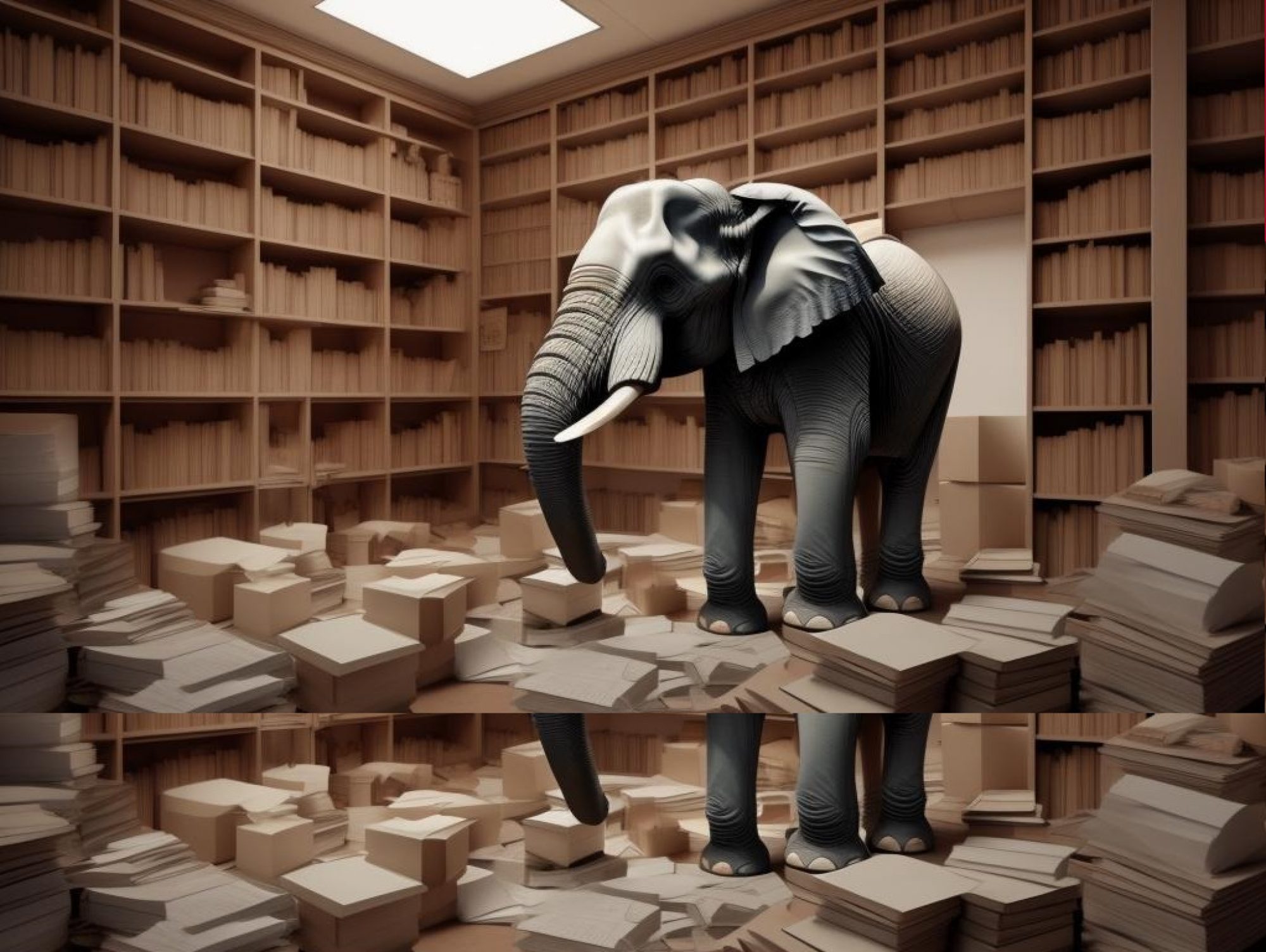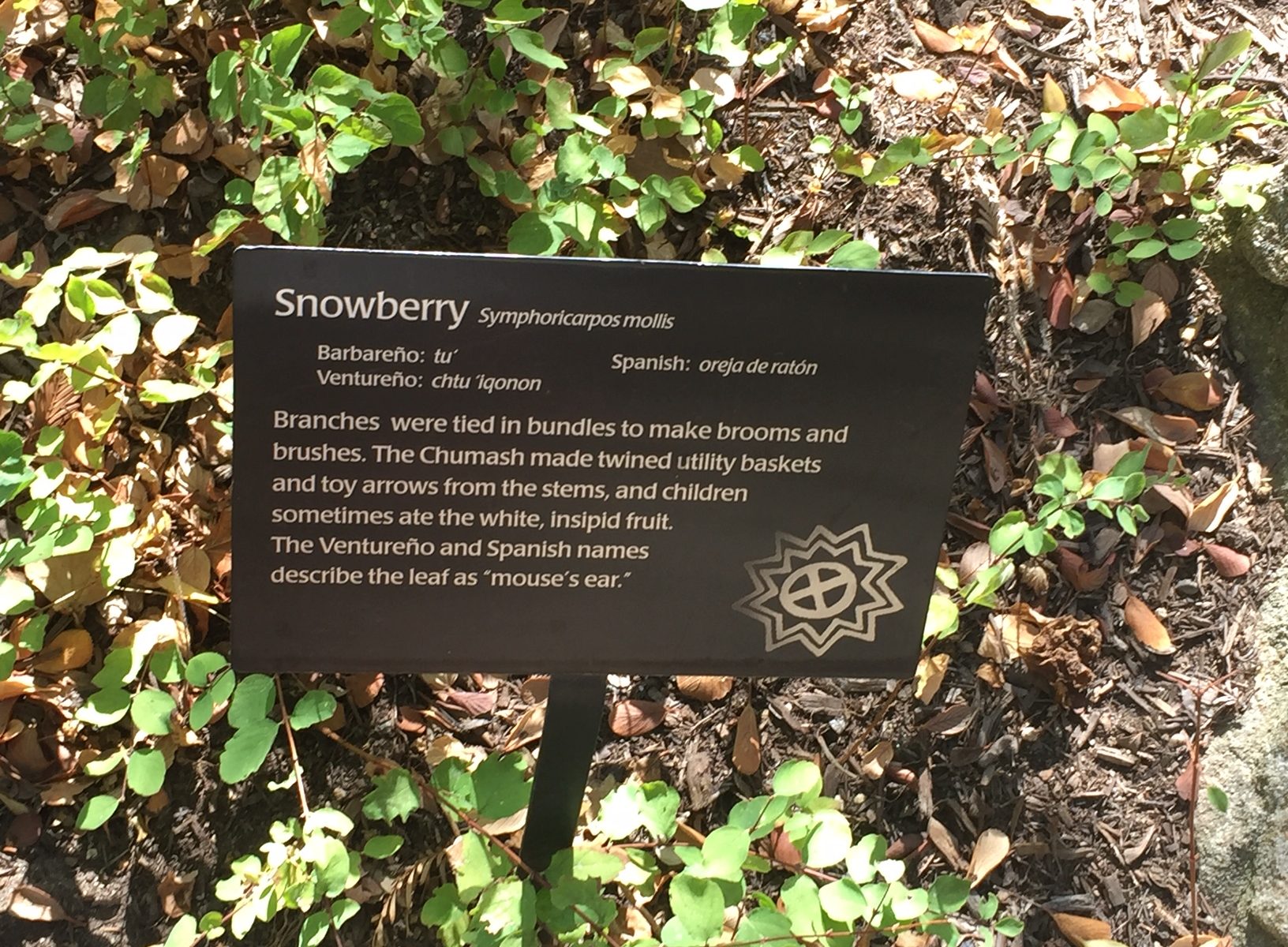Figure 1 . Snowberry plant label from the Suikinaik’oy Garden, featuring the English, Chumash, Latin and Spanish names of the plant and an English description of its use. (Photo taken by the author.)
Apophasis involves a speaker, a writer, or another actor attempting to silence a subject by either refuting it or denying that it should be mentioned at all. Within the field of theology, this definition involves the attempt to define “God,” while simultaneously realizing the impossibility to do so without being reductive. While some scholars interpret this realization as an acknowledgement of the non-existence of a God, others stress that it acknowledges the God’s unspeakable nature, beyond that of language and Being (Henderson 2014). Although negative theology is far removed from the Apophasis Initiative’s historical and cultural topics, its apophatic lens can be extrapolated to studying the de-colonial efforts that we are interested in.
At its rhetorical heart, apophasis reflects the notion of acknowledging “unsaying.” It’s this core notion that I wish to explore in this blogpost. From my own research experience regarding museum work, what is not written in the form of a label, a sign, or a catalogue entry in the museum, is also not acknowledged in that same space. These conscious or subconscious archival or curatorial decisions made by museum staff, both in the past and in the contemporary period, have inevitably seeped into the mindsets of museum visitors and have impacted how the public views cultural heritage. In the information that is left out, museums speak volumes about what they have specifically chosen to value, in terms of histories, cultures, narratives, and voices. This “unsaying” can still be heard, especially by marginalized communities that have their cultural heritage on display or in museum storage.
My own current research work focuses on the Indigenization of museum spaces as an effort to aid decolonization programs. “Indigenization” includes the process of re-affirming Indigenous ways of knowing and amplifying Indigenous voices in institutional spaces. I focus on Central Coast Californian museums and the Chumash tribes that inhabit that same region. An emergence of “native plant gardens” or “ethnobotanical gardens” has spread among Californian museums that have collections of Chumash material culture. While museums have used the terms interchangeably, “ethnobotanical gardens” means a garden that has plants native to the region that displays information about how local communities or tribes used those same plants (NPS 2023). However, how these gardens have been interpreted and exhibited for the public can be different from one another. One aspect that became noticeable during my fieldwork was the decision by some museums to include Latin names of native plants that have been both historically and contemporary used by Chumash communities but not include Chumash terminology. However, to understand the current and complicated relationship between museums and Native American communities, it is essential to provide a brief background on this topic.
While the wider public in recent years have learned more about the struggles Native American communities have faced in terms of repatriating ancestral remains, this is not the only issue plaguing the relationship between Native Americans and museums. Cultural institutions such as museums have long had an active role in the “suppression of the Other,” by not acknowledging centuries of Indigenous history nor their resistance to colonialization (Ariese & Wróblewska 2021). Additionally, the legacy of “coloniality of power and knowledge” has also displaced Indigenous knowledge and ways of knowing by creating an academic hierarchy (Mignolo 2007). The preference given to the Western ways of knowing and knowledge systems over Indigenous knowledge systems and ways of knowing has had a direct impact on museum practices. An example of this would be the lack of prioritization of Indigenous terminology in favor of Western taxonomy practices (Wilder et. al 2016). It is this legacy that I will explore further in this blogpost through analyzing the Chumash ethnobotanical gardens.
My current research project includes non-indigenous run museums and Chumash run museums, that exhibit Chumash history and culture. Chumash refers to several bands of indigenous Californians who lived all over the south-central coast of California, including the islands Limuw, Wi’ma, Tuqan, & Anyapakh (Channel Islands). Within the wider region of Santa Barbara County and Ventura County, there are inland and coastal regions that used to have their own Chumash languages. Four Chumash languages that have had linguistic revitalization campaigns include Šmuwič, Kagimuswas, Samala, and Mitsqanaqa’n (Applegate 1972). These languages also appear on the plant labels at several of the ethnobotanical gardens at the museums.

The Chumash Indian Museum in Thousand Oaks, which is Chumash founded and run, emphasizes in its mission statement that it stands as a cultural center for both Chumash and non-indigenous communities in the region. A complimentary Chumash Ethnobotany Garden guide is given to visitors and includes Chumash uses of plants as food and medicine, as well as clothing, building and craft making materials. All plant labels list first the English name, the Latin name, and then Chumash language names (Figure 2). Suikinaik’oy Garden at Santa Barbara Museum of Natural History is another example. “Suikinaik’oy” in Šmuwič, a language commonly associated with the Santa Barbara region, means “bringing back to life” (SB Museum 2023). The goal as outlined by the museum, is to help revitalize traditional plant knowledge and spread awareness about growing native species at home. The plant labels and plant guide here also follow a similar format of using English, Chumash, and Latin names but includes the Spanish version as well (Figure 1). Lastly, the Museum of Ventura County has a native plant garden with its purpose being noted as living outdoor space, conveying information to the wider public on native plants that are still used by local Chumash communities. Plant labels focus first on the English name, Latin name, and then Chumash name (Figure 3). The plant labels are written in both English and Spanish as well as the local Chumash language Mitsqanaqa’n, which is associated with the Ventura County region (Figure 4).
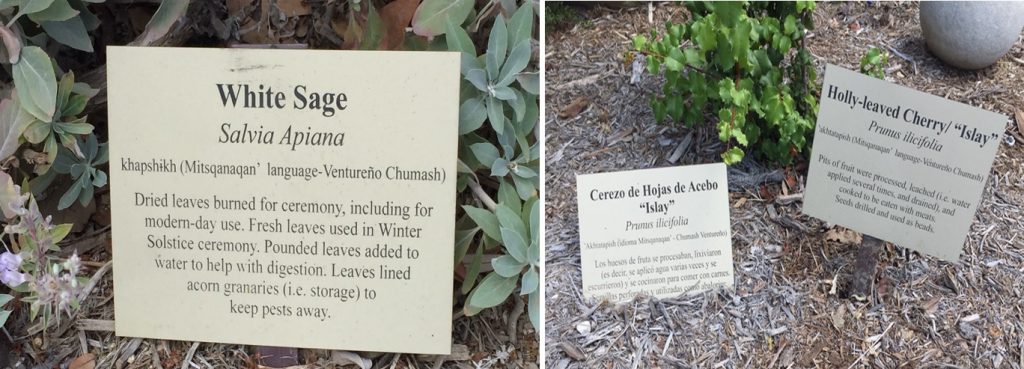
By including ethnobotanical information for every plant and by making sure to include at least one local Chumash plant term, these efforts are aligned with the goals of tribal programs aimed at revitalizing Chumash languages and acknowledging Chumash scientific contributions. The promotion of Indigenous ethnobotany has links to contemporary issues that Chumash bands face such as land sovereignty, environmental degradation, and exploitation of traditional medicinal knowledge. An example would be ongoing environmental crisis in California, with increasing attention now placed more than ever on Indigenous land use and natural resource management strategies (Anderson 2005). All three museums outline the Chumash tribes as the first purveyors of native plant knowledge, with the Suikinaik’oy Garden also calling the Chumash “the first botanists of Santa Barbara” (SB Museum 2023). Additionally, all the museums mentioned outline the contributions of their Chumash collaborators or historical sources that were derived from interviews with Chumash elders.
However, at this point, it is time to focus on the “apophasis” aspect or rather, acknowledging when something is noticeably missing. Another museum, the Channel Islands Museum, which is integrated with the Robert J. Lagomarsino Visitor Center, also has a native plant garden. The center provides a short guide with seven plants with their names given in English and Island Chumash. It is important to note that Island Chumash is not one of the Chumash languages that is experiencing language revitalization because it is no longer in active use. The guide itself serves the purpose of outlining the historical uses of the plants but the garden has close to 30 different species to be viewed by visitors. However, plant labels are given in English and Latin (Figure 5). There is some additional sign postage in the garden itself that gives more information about environment and geographical locations of the plants (Figure 6). It is also important to note that all the plants in this garden have been seen in the previous three museum gardens. Additionally, the center is in Ventura County which still has a Chumash population, with several tribes existing in the region. This felt like a curatorial oversight as well as a lost opportunity to help promote local Chumash culture. What is said by not adding Chumash names for native plants, is that Western botanists are still the purveyors of native botanical knowledge, even of local plants that Chumash tribes have used for thousands of years. While nonnative visitors see their world view reaffirmed with the inclusion of Latin names of these plants, native visitors are once again reminded that their languages and traditional knowledge are being ignored.
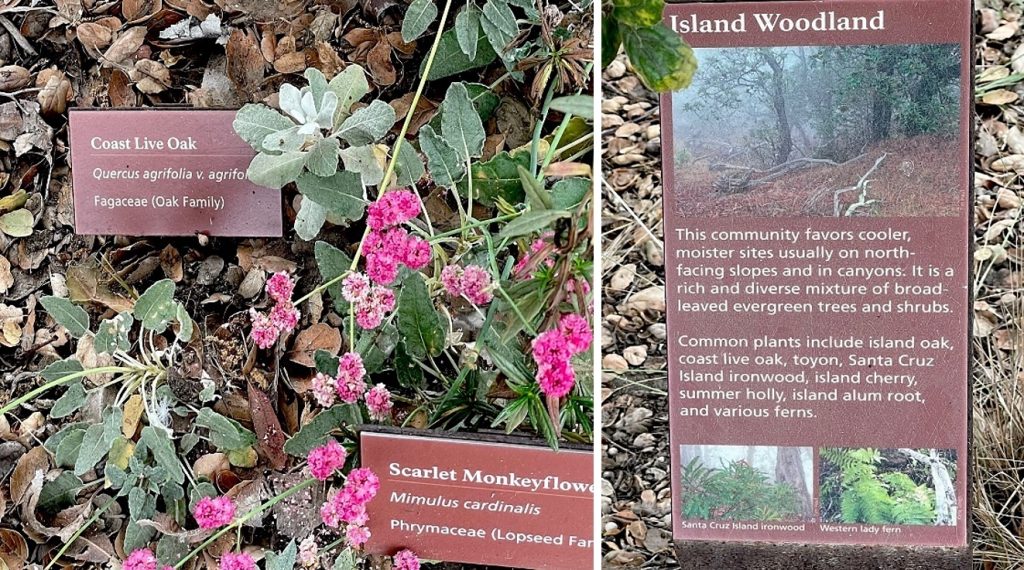
Additionally, the garden at the Channel Islands Museum did not outline any Chumash collaborators or sources which only further emphasized the absence of acknowledging Chumash scientific contributions. By not including any Chumash names on the plant labels, the museum has decided, whether consciously or not, to not align itself with tribal linguistic and scientific revitalization efforts. The exclusion of Chumash names on labels might seem small but if a visitor, such as myself, is able to identify an absence, especially after noticing this detail at other native plant gardens, then the information is regarded as “missing.” Indeed, I am not the only visitor to notice this “missing terminology.” As part of my research, I have many conversations with both Chumash elders and Chumash environmentalists who have outlined the importance of the existence of Chumash ethnobotany gardens and the significance of preserving the Chumash names of these plants for future generations.
However, I do not want to reduce notion of “apophasis” only to this aspect of “missing Indigenous terminology.” The reason for this is because I have seen examples of “things left unsaid” or “information missing” by Indigenous run museum and cultural centers as well. One such example is the Indigenous run Malki Museum, which is dedicated to preserving the culture and history of the Cahuilla Indians on the Morongo Reservation in Banning, California. The Malki Museum is also the oldest Native American run museum in California. At their native plant garden, the Cahuilla and English names are mentioned, followed by the Cahuilla use of the plant (Figure 7). If a visitor wants more information about Cahuilla plant uses, they must consult the plant guide that is available at the museum office. The guide does not provide the Latin names of the plants on display in the garden.
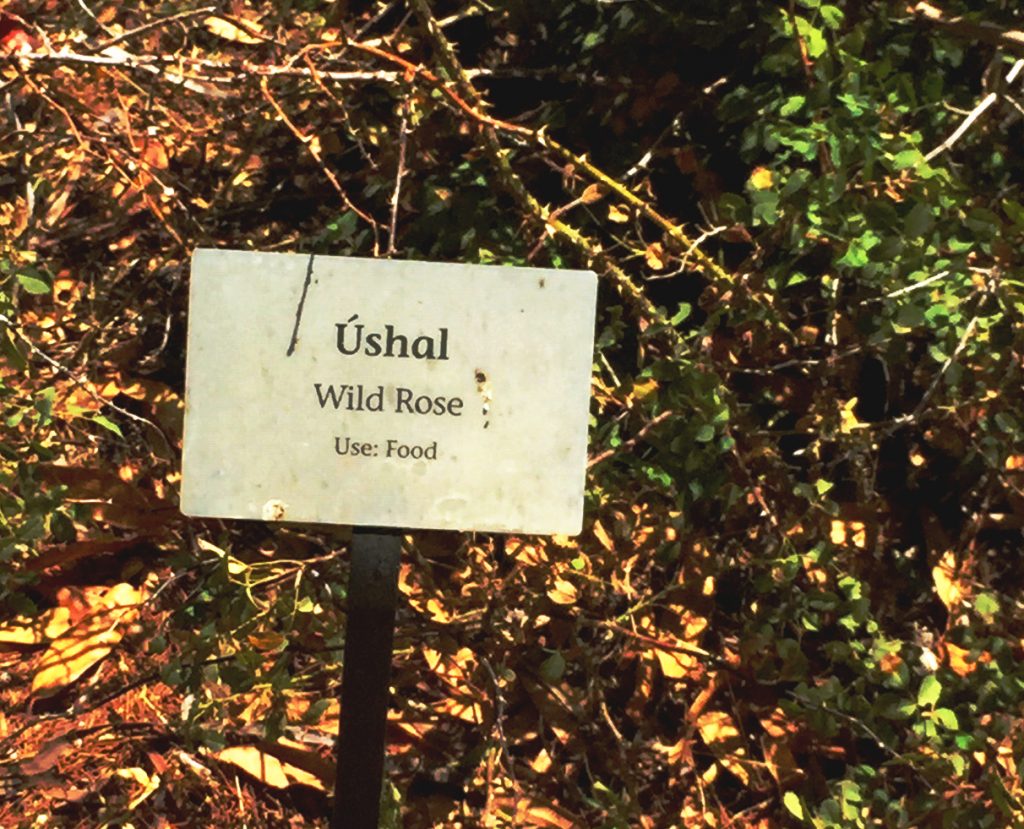
By not mentioning the Latin plant name, it prioritizes the names that do get mentioned, which are the English and Cahuilla names. In fact, in the plant guide, it states that the labels give the “common names” for the plants. Arguably, this is the strongest evidence for “indigenizing” museum grounds so far because the standard of using the Latin name has long had the connotation of being “the scientific name” for the plant. In this case, this counter-apophasis strategy can be used as to actively fight and challenge the preference for Western taxonomy over the use of Indigenous terminology. It also places emphasis on knowledge coming from non-Eurocentric sources, which helps open a wider museum audience to acknowledging multiple ways of knowing, thereby lessening the grip of the long-standing legacy of the coloniality of knowledge as well as knowledge production.
As mentioned earlier, apophasis typically starts with an actor’s desire to mention or define something but is followed by them retracing their steps when faced with the unlikelihood that doing so can be done in an inclusive or societally acceptable way. This sets the dynamic of wanting to address a subject but then going back on one’s steps, and thus “unsaying” it after all. The “unsaying” in this definition therefore has a more active connotation than merely leaving something out. The native plant garden at the Channel Islands Museum is an example of this. They display the attempt to address Island Chumash ethnobotany in their short garden guide but ultimately fail to “indigenize” their outdoor space because the taxonomic presentation of the native plants lacks the inclusion of Chumash languages and traditional knowledge. It is important to address the apophasis question in museology and cultural studies. There is a clear difference between the museums that are very mindful of the problematic legacy of European taxonomy. While not all the museums mentioned in this decenter Western ways of knowing, the ones that include Indigenous terminology help fight the privileged academic hierarchical system that has long placed European colonizers as the only experts and purveyors of native plant knowledge. It is important to reflect on when the Latin name is included, especially when it comes at the cost of excluding Indigenous terminology. “Indigenization” is a very fitting response to the apophatic paradoxes created by de-colonizing attempts, which may be a good start, but may still muffle the Indigenous communities whose voices we are trying to amplify in cultural institutions. Despite the inherent difficulties of continuing to negotiate its description, it is worth continuing such efforts while also acknowledging that its definition might be continuously up for debate.
An extended version of this blogpost can be read later in the future in the form of an article submitted for the summer 2024 journal for the American Indian Workshop conference. The title of the journal, “Unsettling Museum Exhibits: International Perspectives on Paradigm Shifts in Native Community Collaborations” focuses on the contemporary relationships and issues between museums and Native Americans. The title of the future article is “The Indigenization of Museum Grounds: Chumash Ethnobotany Gardens.”
Sonja Salminiitty (sonja.salminiitty@helsinki.fi) is a doctoral researcher at the University of Helsinki, in the History and Cultural Heritage Program, supervised by the North American Studies branch. Her current research project, “Indigenization and Californian Central Coast Museums,” develops a theoretical model of Indigenization that museums can implement by analyzing several Chumash-run and non-Indigenous-run museums on the Central Coast. Additionally, she is a researcher for the Academy of Finland funded project “Traditional Indigenous Ecological Knowledge, Re-Indigenization and National Parks: Toward a New Framework for Sustainable Co-Governance” (IndEcol).
Sources mentioned
- Anderson, M. Kat. Tending the Wild: Native American Knowledge and the Management of California’s Natural Resources. Berkeley, Los Angeles & London: University of California Press, 2005.
- Applegate, Richard B. Ineseño Chumash grammar. Ph.D. dissertation, Berkeley: University of California, 1972.
- Ariese, Csilla and Wróblewska, Magdalena. Practicing Decoloniality in Museums: A Guide with Global Examples. Amsterdam: Amsterdam University Press, 2021.
- Henderson, David. Apophatic Elements in the Theory and Practice of Psychoanalysis. London & New York: Routledge, 2014.
- National Parks Service. Ethnobotanical Garden. NPS. https://www.nps.gov/places/ethnobotanical-garden, 2023.
- Santa Barbara Museum of Natural History. Sukinanik’oy Garden of Chumash Plants. SB Museum. https://www.sbnature.org/visit/exhibitions/87/sukinanikoy-garden-of-chumash-plants, 2023.
- Mignolo, Walter D. “Introduction: Coloniality of power and de-colonial thinking,” Cultural Studies 2:2-3 (2007) pp. 155–167.
- Wilder, Benjamin T., O’Meara, Carolyn., Monti, Laurie., & Nabhan, Gary Paul. “The Importance of Indigenous Knowledge in Curbing the Loss of Language and Biodiversity,” BioScience 66:6 (1 June 2016) pp. 499–509.
